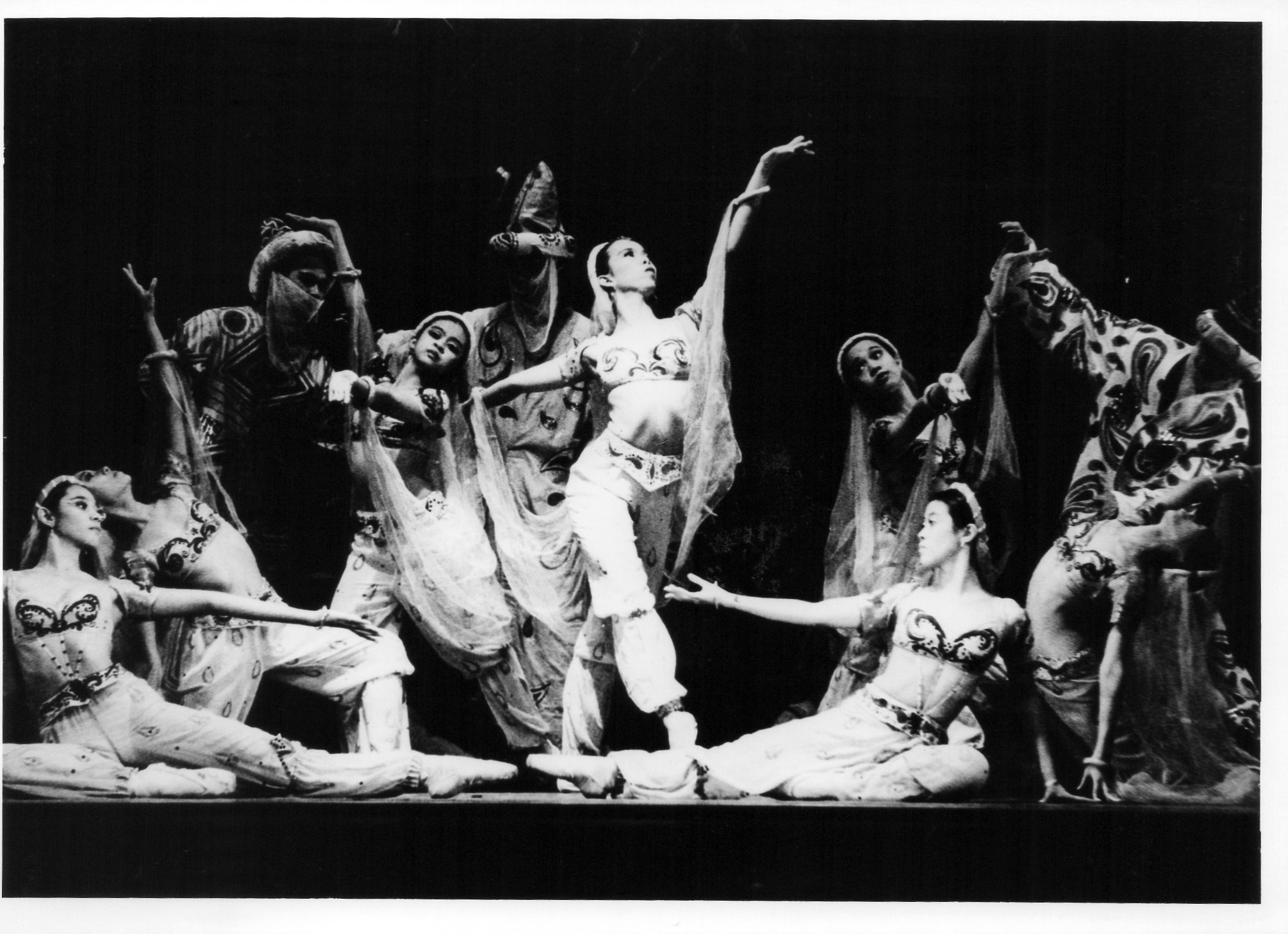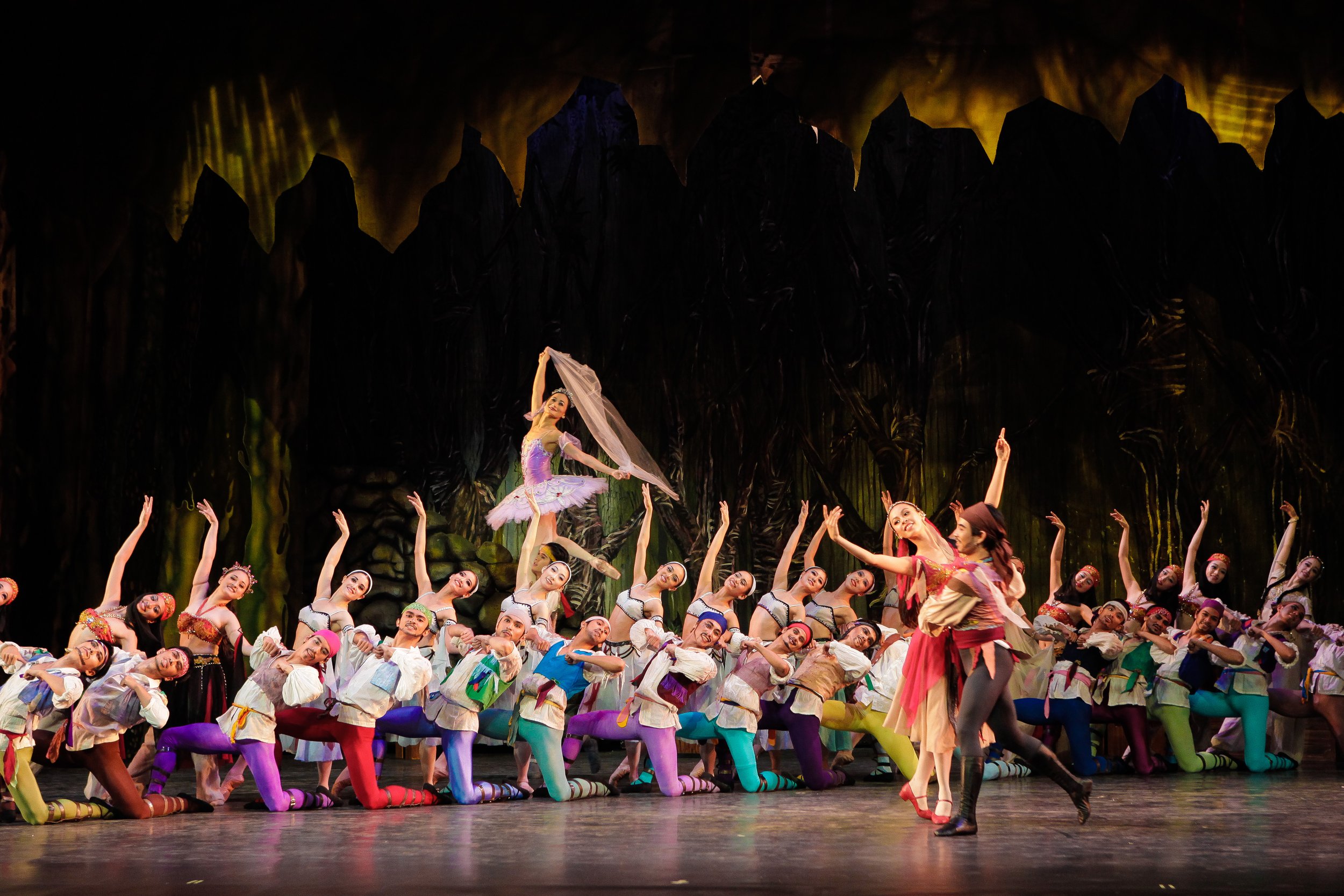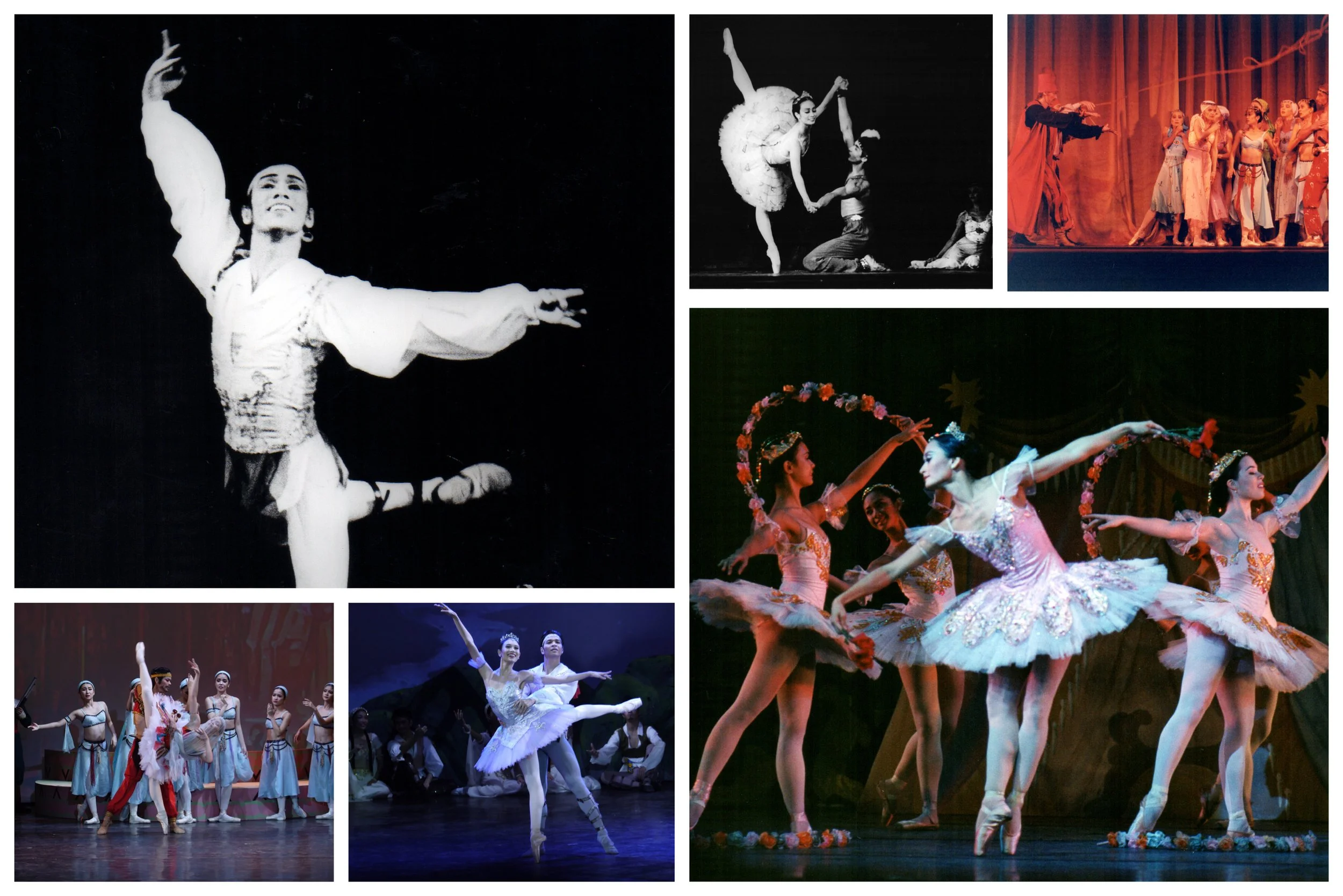Refining a pirate ballet: A new Le Corsaire sets sail
Ballet Manila artistic director Lisa Macuja Elizalde, who made her debut as Medora in 2000 opposite Osias Barroso Jr., wanted to make the character less of a damsel in distress in her own choreography of Le Corsaire. Photo by Ocs Alvarez
“Pure entertainment” is how Ballet Manila artistic director Lisa Macuja Elizalde describes Le Corsaire, the pirate adventure which will open the company’s 26th performance season dubbed “Ballet Masterpieces” on February 24 and 25 at Aliw Theater.
Mark Sumaylo and Abigail Oliveiro reprise their roles as Conrad and Medora while fellow principal dancer Joshua Enciso debuts as Ali in Lisa Macuja Elizalde’s Le Corsaire, opening Ballet Manila’s 26th performance season. Photo by Giselle P. Kasilag
“I think the lightness of the theme and story will definitely appeal to the average Pinoy audience, young and old. It’s pure entertainment with no need to internalize or analyze. There’s romance, adventure, treachery, suspense, action, drama – all the ingredients of a telenovela, live onstage,” she says. “It’s not every day you get a pasha’s harem, a shipwreck, swashbuckling pirates and kidnapped damsels, a living garden and a slave market all in one evening.”
In brief, Le Corsaire is about the pirate Conrad who falls in love with the Greek maiden Medora. With the help of his trusted slave Ali, he rescues her from being part of the Pasha’s harem after being auctioned off by Lankadem. In the pirates’ cave, there is celebration until Conrad’s ally Birbanto – feeling that the pirate leader is going soft by freeing slaves – decides to turn on him. Birbanto colludes with Lankadem to take back Medora to the Pasha, but Conrad saves the day and secures a happy conclusion.
Ballet Manila pioneer Eileen Lopez, now the company’s co-artistic associate, was Lead Algerian in Le Corsaire in 1998. BM apprentice Sofia Sangco (to Lopez’s right, standing), now a faculty member with the Lisa Macuja School of Ballet, was an Algerian slave.
A story unfolding in three acts through a stunning showcase of dance, Le Corsaire has been part of Ballet Manila’s active repertoire for over two decades. The company’s first staging of the ballet in 1998 was significant as it entered into a collaboration with Russia’s Krasnoyarsk Ballet, resulting in the premiere of the full-length Le Corsaire not just in the Philippines but in Southeast Asia. Since that auspicious beginning, Ballet Manila has brought back the production seven more times – without having to “import” a guest company anymore. Its last staging of the pirate ballet was in 2018.
This year’s Le Corsaire is equally noteworthy as Macuja Elizalde is presenting her own version of a ballet that had her dancing as Medora numerous times, debuting in the role in 2000. While she had always enjoyed the ballet as a whole, something about the story just didn’t sit well with her. In her director’s notes in 2013 when she was saying goodbye to Medora, she mused, “It’s not exactly one of my favorite roles. I mean, think about it – she gets kidnapped twice and has to rely on a man to save her both times. She trusts the shady Lankadem enough to willingly receive a bouquet of flowers from him and give it to her beloved Conrad even after he took her forcefully from her home and tried to sell her to a rich Pasha in a slave market! I mean, come on – who does that? Where is this heroine’s brain?”
Le Corsaire is a showcase of ballet at its finest, from the principals to the corps. This scene is from the company’s 2013 staging. Photo by Jojo Mamangun
It is the dancing that Macuja Elizalde points to as the redeeming value of Le Corsaire, mentioning the piroutted tricks of the male leads and support as they play pirates, slaves and slave traders, the helicopter side splits that Conrad, Lankadem, Ali and Birbanto take turns doing, and the fouettés executed by both Medora and her friend Gulnara.
At the recent media conference to announce Ballet Manila’s 26th performance season and its off-season productions for the year, she shared: “I always wanted to change many things in Le Corsaire. So when the opportunity came, I pounced wholeheartedly and I could say the results will delight you.”
Primarily, she wanted to make Medora less of a damsel in distress. Also wishing for a more natural flow to the story, she tweaked the sequence of events. While the version they would previously stage, choreographed by Marius Petipa, opened with a shipwreck, Macuja Elizalde’s begins in a bazaar somewhere in the Mediterranean coast. It serves as the busy, colorful setting to Conrad’s encounter with Medora and a glimpse into the lifestyle of wealthy men such as the Pasha who buy women from the slave trader Lankadem.
As Conrad in Ballet Manila’s first full-length Le Corsaire in 1998, Osias Barroso Jr. was supported by dancers from Krasnoyarsk Ballet.
In a twist, Gulnara, who is sold off as a slave as well, falls in love with the Pasha and conspires with Medora to have him think he is marrying the latter when it is actually Gulnara behind the veil. Medora escapes with Conrad and they sail off, only to end up shipwrecked. Still, amid the dire situation, they are overjoyed to start a new life together.
Despite the changes, what Macuja Elizalde made sure she adhered to is for her Le Corsaire to feature ballet at its finest, with her dancers embracing the challenging choreography she set for them. It thus continues to be a highly technical platform for such iconic treats as the pas de deux of Gulnara and Lankadem, the pas de trois of Conrad, Medora and Ali, the complicated variations of the Odalisques, the stunning Naila Waltz also known as the Living Garden corps de ballet scene, and the signature 32 fouttés of Medora. But of course, the trademark “testosterone dancing” also remains. The characters Conrad, Ali, Lankadem and Birbanto fire up the stage with their fast and furious footwork and movements. Now, even the Pasha has the opportunity to shine with his own dance.
Lisa Macuja Elizalde said goodbye to Medora in 2013. Her Ali then, Gerardo Francisco Jr., will dance the same role for the 2024 Le Corsaire. Photo by Jojo Mamangun
As with Ballet Manila’s past shows of Le Corsaire, this new version is an opportunity for the company’s principals and soloists to show off their skills. Mark Sumaylo and Abigail Oliveiro reprise their roles as Conrad and Medora which they first performed in 2018. There is an abundance of debuts starting with their alternates, fellow principals Romeo Peralta Jr. and Jasmine Pia Dames who are starring in their first full-length Le Corsaire. Dames is also debuting as an Odalisque.
Gerardo Francisco Jr. will return as Ali, a role he has been dancing since 2004 and which he is sharing now with fellow principal Joshua Enciso. Peralta, who first danced as Birbanto in 2018, will take on that role anew for Sumaylo’s Conrad, while Enciso becomes Birbanto to Peralta’s Conrad. Two other principals, Shaira Comeros and Jessica Pearl Dames, are first-time Gulnaras, while company artist Noah Esplana and soloist Anselmo Dictado are first-time Lankadems. Soloist Sean Pelegrin will debut as Pasha, sharing the role with Francisco Jr.
Pearl Dames and soloist Jessa Balote return as Odalisques, forming a trio with Pia Dames. Shaira Comeros, Rissa May Camaclang and Eva Chatal make up another group of Odalisques, with Comeros and Chatal performing in these roles for the first time.
Macuja Elizalde is undoubtedly excited about finally revealing her version of Le Corsaire before an audience, knowing that its premiere will add yet another important notch to Ballet Manila’s already rich history with this pirate caper.
“There was a time when I would dance Medora and always think that this ballet can be re-choreographed to make more sense. I think we’ve been able to do it!”








